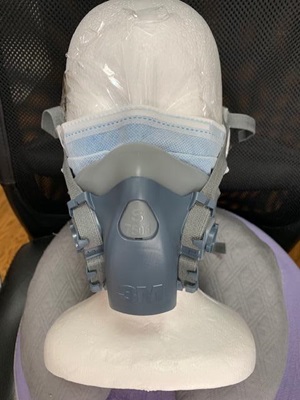
Abstract:
A critical shortage of respirators, masks and other personal protective equipment (PPE) exists across all sectors of society afflicted by the COVID-19 pandemic, placing medical staff and service workers at heightened risk and hampering efforts to reduce transmission rates. Of particular need are the N95 medical face respirators that filter 95% of all airborne particles at and above 0.3 μm in diameter, many of which use meltblown microfibers of charged polypropylene (e.g., the 3MTM 8200). An intensive search is underway to find reliable methods to lengthen the useful life of these normally disposable units.
It is currently believed that these masks and respirators cannot be cleaned with 70 to 75% alcohol-water solutions, as past wet/dry experiments show that filtration efficiency can drop by ~40% after the first such treatment. This has been interpreted as the liquids disrupting the surface charge on the fibers and has led to a recent CDC/NIOSH advisory against using alcohol for their decontamination. We have replicated the drop in efficiency after alcohol treatment. However, we find that the efficiency can be recovered by more effective drying, which we achieve with a vacuum chamber like those common in many geochemistry laboratories. Drying at pressures of < ~6 mBar (0.6 kPa) restores the measured filtering efficiency to within 2% or so of the pre-washing value, which we have sustained for 5 cleaning-drying cycles so far in three models of N95 masks. The mechanism seems to be the removal of water molecules adsorbed on the fiber surfaces, a hypothesis which is supported by two independent observations: (A) the filtering efficiency increases non-linearly with the weight loss during drying, and (B) filtration efficiency shows an abrupt recovery as the vacuum pressure drops from 13 to 6 mBar, the range physically attributable to the removal of adsorbed water. These results are not compatible with the electrostatic discharge hypothesis, and rather suggest that water molecules adsorbed to the fiber surface are reducing the filtration efficiency via surface tension interactions (e.g., wicking between the fibers and coating their surfaces with a film).
Such a degradation mechanism has two implications: (A) Respirators decontaminated by a soak in 70% v/v ethanol regain their filtration efficiency once they are fully dry. We employ vacuum chambers in this study, which are inexpensive and commonly available in many geochemistry labs (and virtually any hospital). (B) This mechanism presents the possibility that mask filtration performance may be subject to degradation by other sources of moisture, and that the mask would continue to be compromised even if it appears dry. The mask would need to be vacuum-dried to restore its performance.
This study introduces a number of methods which could be developed and validated for use in resource-limited settings. As the pandemic spreads to rural areas and developing nations, these would allow for local efforts to decontaminate, restore, monitor, and test medical masks.
A pre-print of this paper is available on the TiTech COVID-19 www site: An Efficient Ethanol-Vacuum Method for the Decontamination and Restoration of Polypropylene Microfiber N95 Medical Masks & Respirators https://www.ura.titech.ac.jp/covid19/listofresearchpapers/index.html
Speaker: Dr. Joseph L. Kirschvink, ELSI
Date: May 15, 15:30-16:30
Venue: Online
